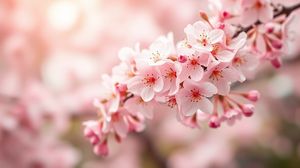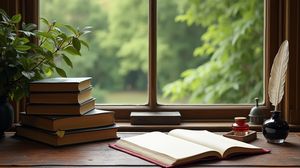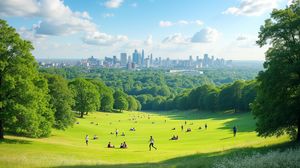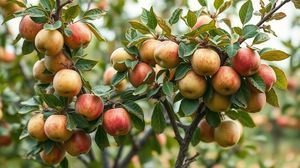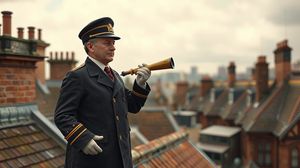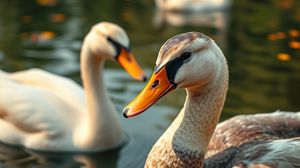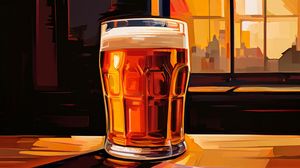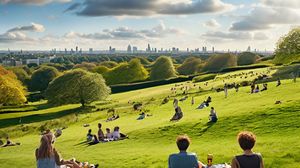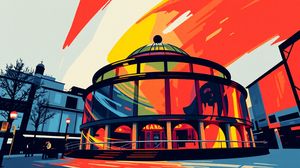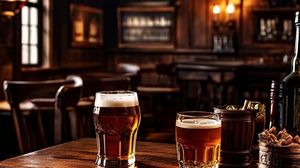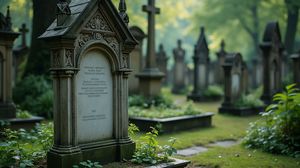
Keats House in Hampstead is a charming literary museum dedicated to the life and works of the Romantic poet John Keats. Situated in a tranquil residential area, this Regency villa offers visitors a glimpse into the poet's world where he drew inspiration to write some of his most famous works, including "Ode to a Nightingale".
The house was originally built between 1814 and 1815 and was known as Wentworth Place. John Keats moved in during 1818, living there until 1820. The home's peaceful setting amidst picturesque gardens provides an evocative backdrop that inspired Keats, and today the house is a testament to his enduring legacy.
A quirky fact about Keats House is that it has played host to a celebrated literary circle, including prominent figures like poet Percy Bysshe Shelley. The house maintained its literary associations even after Keats' departure, adding to its cultural richness.
The museum houses a unique collection of Keats' letters, notebooks, and other personal artifacts, providing an intimate look at the poet's life and creative process. These artifacts offer visitors a tangible connection to Keats' passionate and imaginative spirit.
One interesting aspect of Keats House is its architecture; it reflects a style that was typical of the Regency period, with charming period features such as a beautiful staircase and elegant drawing rooms. These features give visitors a sense of stepping back into the early 19th century.
Keats House is not only a historical site, but it also hosts an array of events and activities ranging from poetry readings to educational workshops, making it a dynamic and engaging place for both literary enthusiasts and the general public alike.
Visitors might find it fascinating to know that the house has survived potential demolition threats over the years. Passionate campaigns and public support have helped preserve its structure and keep Keats' legacy alive for future generations.

Making the Most of Your Visit:
Arrive early if you can, especially on weekends. The peaceful atmosphere of the garden is best experienced when it's less crowded and you can imagine Keats finding his inspiration among the flowers and trees.
If you're a poetry lover, try to time your visit with one of the poetry events. These readings and workshops add another layer of connection to Keats' work and are well worth planning your visit around.
While exploring the house, pay close attention to the personal artifacts. It's easy to get caught up in the beauty of the rooms, but items like Keats' letters and notebooks offer a deeply personal glimpse into his life and can deepen your appreciation of his poetry.
Don't miss the chance to explore the surroundings of Keats House, especially John's Wood Walk. It's thought that some of Keats' inspiration for picturesque scenes in his poetry came from these local strolls, offering you a literal walk in the poet's shoes.
If the weather is agreeable, bring a picnic to enjoy in the gardens. There's a special charm in sitting among the greenery, possibly on the same plot where Keats wrote "Ode to a Nightingale," feeling a direct connection to the poet's muse.

Visiting Times & Costs:
Opening Times:
- Keats House is open to the public, typically from Wednesday to Sunday. The opening hours are generally from 11:00 AM to 5:00 PM.
- Closed on Mondays and Tuesdays.
- It is advisable to check for any seasonal variations or special closures.
Admission Fees:
- General admission charges apply for entry into the museum. Concessions are available for children, students, and seniors.
- Some areas of the house, such as the garden, are free to explore.
- Special events or exhibitions may have separate charges.
Accessibility:
- Keats House is committed to being accessible to all visitors. Most parts of the house are accessible for wheelchair users, although some historical features might pose challenges.
- Assistance dogs are welcome, and there are accessible toilets available on site.
- It's recommended to contact them in advance for any specific accessibility needs or to find out more about available facilities.

Address & Map:

Nearby:
